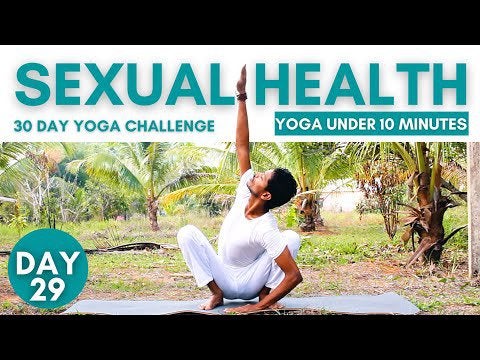
Many yoga poses can put stress on the shoulders. This can lead to injuries. Before you begin a new exercise in yoga, it is important that you understand the anatomy of your shoulder joint. The shoulder joint consists of the scapula (shoulder blade), the clavicle, and the humerus (upper-arm bone). These bones meet at the elbow joint, and each one has a unique range of motion.
Quads are the muscles responsible for knee extension. Gluteus maximus is the muscle responsible for hip abduction and hip flexion. It joins the front and rear thigh muscles. These are just four muscles that are important for yoga poses. You can understand the importance of each muscle by looking at them separately. You will feel each part of a yoga pose as you go through it.
Hamstrings are responsible to knee extension and are derived form the ischial tuberosity of the pelvic bowl. They also play a role in hip expansion. They are vital for many yoga poses. But, without proper alignment, these muscles can be hard to access. While it will be more challenging, putting your arms in front of your chest will help you balance better and allow for more flexibility. Once you have a better understanding of the anatomy of the hamstrings and how they work together, you can safely move on to the next one.

The hamstrings can also be benefitted from yoga. They are responsible to extend the knees and come from the pelvic box's ischial tuberosity. They aid in hip flexion and plantarflexion. Because they control many movements throughout the body, hamstrings can be important in many yoga poses. This helps you find the right one for your needs.
Do not overstretch the SI joint while doing the balancing poses. End goal is to achieve a balanced, even motion and strong core. A pose's alignment is another important consideration. Pain in the knee can result from a stretched joint. This could lead to injury. Instead, try using props that help you achieve a more balanced alignment.
Overmobilized scapulae: While this may give the appearance of a twist, it does not necessarily occur in this pose. Spine spin can also be affected by the position of the arm. When the meniscus is fully relaxed, it moves to the back. A well-aligned pelvis assists the body to move in the right direction. The hips and spine should be evenly distributed.
To achieve a uniform range of motion in your knee joint, the pelvic joint should be flexed. You should keep your pelvis and scapula in neutral. If they aren't, it can cause spinal flexion which may lead to injury. If this is the situation, you may want to avoid this pose. While the leg extends fully, the meniscus must be pushed to one side of the joint.

The pelvis is composed of three bones, femur, thighbone and femur. They are rounded and make up a cup-shaped arrangement. The head of the femur sits in the pelvis, which is a ball-shaped bone at the top of the thigh. The lower leg bones also meet in the femur. Each of the three bones has its own unique shape and angle. This can have an impact on the ability to do certain poses.
The anatomy of the yoga poses is vital for beginners. You will find it easier to perform the correct postures when you are more familiarized with your body. David Katz, a world-renowned specialist in yoga and anatomy, gives a detailed explanation of the anatomy basics in his book Anatomical Position. He explains the anatomy of the key yoga poses and how each one affects the body. It is easy to apply the anatomy to your everyday life once you have a good grasp of it.
FAQ
What's a good routine for a daily workout?
Regular exercise is key for staying in shape. You don't have to do the same type of exercise every day, it doesn't really matter. Consistency is key. It is important to stay consistent in order to get results.
Start by doing small amounts of daily physical activity (like walking). Increase the time you spend exercising each day until you can do 30 minutes. You could do this by running, swimming, weight training or yoga.
It's important that you get your exercise done every day. Don't miss any sessions unless you have an excuse.
If you exercise outside, ensure that you wear appropriate clothing and footwear. Also, consider weather conditions and how they might affect your ability or safety while exercising.
While exercising, make sure to drink plenty water. It is best to avoid alcohol while you're exercising. Avoid caffeine-rich drinks like coffee, tea, and coca. They may give you energy, but they will also dehydrate you.
At first, it's normal to feel tired after you finish your exercise routine. Keep going with your workouts and you'll soon feel more energized.
Is Yoga Beneficial?
Yoga has been around since ancient times, and it has recently gained popularity. It is now very popular among celebrities and even ordinary people who want to look fit and healthy.
Yoga is great because it strengthens your muscles as well as stretches them. It can help you relax and calm down.
The primary difference between yoga and other forms is the focus on breathing techniques in yoga.
You can practice various poses to improve your flexibility and balance.
Can I drink alcohol while exercising?
Yes. Alcohol increases energy expenditure, speeds up recovery times, and reduces soreness.
The insulin sensitivity of alcohol is also increased, which makes it easier for glucose to be absorbed.
Alcohol can also cause dehydration which can lead to a slower metabolism. You may also experience a reduction in testosterone production which can lead to decreased muscle-building potential.
This is why women shouldn't have alcoholic drinks before exercising. Women who are heavily alcoholic should wait at minimum 24 hours before starting to work out.
Nursing mothers should abstain from alcohol as much as they can.
Men should drink only one glass of alcohol per day.
What foods should I avoid when trying lose weight?
Avoid trans fats. Trans fats can increase LDL (the negative) cholesterol levels and decrease HDL (the positive) cholesterol.
Trans fats can be found in fast food, deep-fried foods, packaged baked goods, snack cake, and other processed foods.
These unhealthy fats are also known to cause inflammation and lead to heart disease as well as diabetes.
Avoid foods containing artificial sweeteners. Artificial sweeteners increase the risk of getting cancer.
These chemicals are found in many products, including soft drinks, candy bars, chewing gum, as well as candy bars. They can also be found in other foods like meat, poultry, and eggs.
Artificial sweeteners can be saccharin or cyclamate, sucralose, sorbitol or aspartame.
The American Heart Association advises against using these chemicals, as they could damage DNA.
What does milk do?
Next time you buy milk think about what you could do with it. It could also be beneficial to quit drinking coffee.
Both children and adults have been shown to benefit from milk. Milk provides children with nutrients such as vitamin D, calcium, potassium, phosphorous, and magnesium.
It promotes weight gain, digestion, bone strength, and aids digestion. Adults who consume dairy products tend to have fewer illnesses and better immune systems.
Also, milk is rich in lactose so people who can't digest this sugar well can still reap the benefits of it without any stomach issues.
Try drinking more milk instead of soda or juice. Your teeth and bones can be strengthened by drinking milk rich in vitamin D and calcium.
Plain low-fat yogurt is another option if milk tastes bland to you. Yogurt can be a great substitute for milk, as it has fewer calories and more protein.
Yogurt also contains probiotics which improve digestion and immunity.
Take a glass warm milk before you go to bed if you are having trouble sleeping. Warm milk helps relax muscles and boosts serotonin levels.
Is Cardio Better Than Strength Training?
Both are equally beneficial. If you want to increase muscle mass faster, cardio is the better option.
Cardio burns far more calories per min than strength training. It also burns fat more efficiently.
Strength training increases muscle mass but takes more time than cardio.
Statistics
- An estimated calorie range for moderately active adult males falls between 2,200 to 2,800 calories per day, depending on age. (eatright.org)
- By John Thompson Take a whopping 38% off a set of PowerBlock Pros. (menshealth.com)
- 10 pounds in a month is likely during a lean bulking phase, especially for beginners. (muscleandstrength.com)
- The PRS enabled risk stratification for overall prostate cancer and lethal disease with a four-fold difference between men in the highest and lowest quartiles (HR, 4.32; 95% confidence interval [CI], 3.16-5.89). (pubmed.ncbi.nlm.nih.gov)
- According to the American Academy of Dermatology (AAD), men over 50 are at a heightened risk of developing it. (healthline.com)
External Links
How To
How can a man get in shape in 30 days?
The best way to achieve fitness goals is by breaking them into small achievable steps.
Each day you need to be working towards your goal. This could mean doing 10 pushups every 5 minutes or running 3 km.
You will notice positive results if this is done consistently over time.
Here, consistency is the key. You have to keep at it until you succeed!
What is the difference between Aerobic Fitness and Anaerobic Fitness?
Anaerobic fitness means that our bodies can perform intense physical work with no oxygen. Anaerobic pathways provide sufficient energy for high-intensity exercise. Anaerobic pathways include glycolysis (creatine phosphate), the phosphagen and lactic acid.
Aerobic fitness, on the other hand, is a sustained low-intensity exercise. Aerobic exercise is a form of aerobic exercise in which oxygen is the primary fuel source for the cells. In other terms, the aerobic pathway has more energy that the anaerobic.
You need to build up your aerobic capability if you plan on running a marathon. If you are only focusing on increasing your anaerobic capabilities, you won't finish the race.
Aerobic fitness can also be called cardiovascular fitness. The two most common methods of measuring cardiovascular fitness are VO2 max testing and step tests.
Tests for VO2 Max
The body's maximum oxygen consumption during exercise is called the VO2 Max. This test measures the amount of O2 the body can utilize while exercising.
This test can measure your cardiovascular fitness accurately. However, it requires expensive equipment and highly trained professionals to administer the test.
Step Tests
Step tests are simple yet effective methods of measuring cardiovascular fitness. Based on your age and weight, they involve running or walking on a track or treadmill for a specified time.
These tests are inexpensive, easy to conduct, and can be done almost anywhere. For example, you could walk on a treadmill 20 minutes and then stop. Your heart rate should remain within a specific range throughout the whole session.
This method is called the Bruce Protocol. Bruce was himself a runner and developed the protocol after realizing his heart rate wouldn't increase when he ran for longer distances.